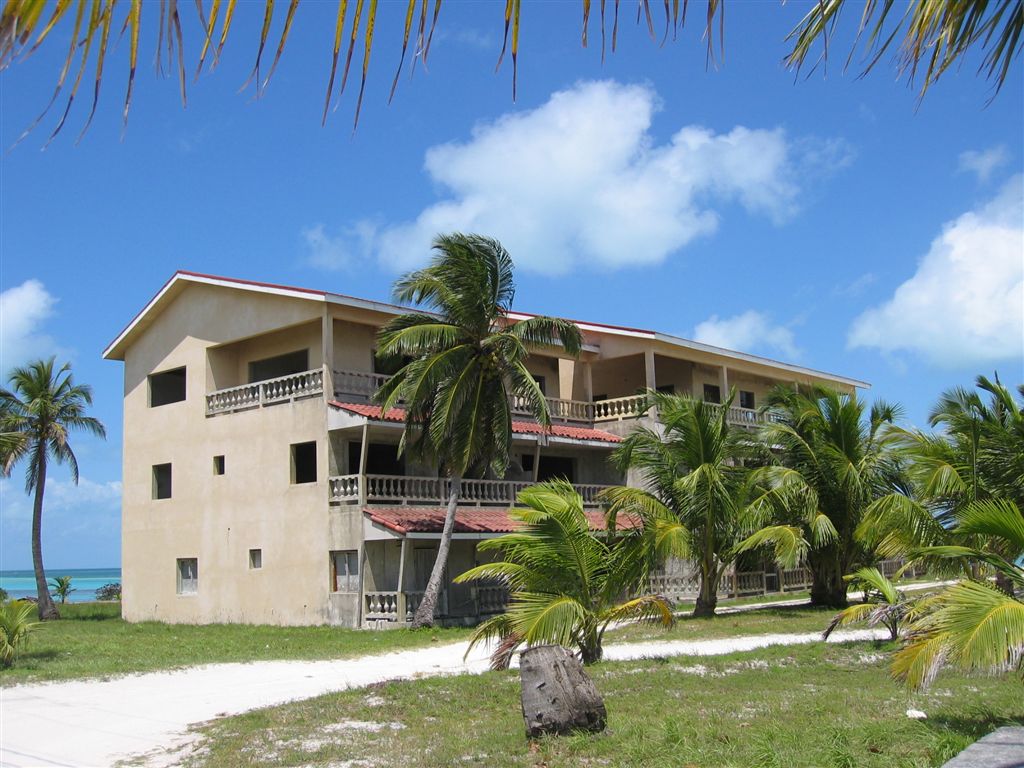
A large fixer-upper in Caye Caulker. Photo © Isaac Peterson, licensed Creative Commons Attribution.
If you’re planning your dream house, think about how you will go about the construction. You can be involved or you can act as project manager and hire a foreperson, or you can bring in a building contractor. When you are thinking about buying a property or land in Belize, which you either want to restore or build on, make sure it’s within your budget. Property may seem comparatively cheap here, but once you start building, the costs add up. It also depends on whether you buy imported or local goods. Many things are imported, as the market here is too small to support full industries. Even if you have a mental image of your dream home, drive around and see what other people have built; there are some interesting houses out there.Even if you have a mental image of your dream home, drive around and see what other people have built; there are some interesting houses out there. If your property does involve building, try to do some calculations before you buy. If you need to put in an access road, electricity, or water, find out what the costs are. How flat is your land? Will you need to get a grader in to smooth a patch for your house? Will you need fencing? Think about things like water storage tanks, septic tanks, and water pumps. If you’re building using wood, think about preservatives because you will need them: Some people use burn oil (used engine oil), which is probably the cheapest option; others buy protective varnish, which can vary hugely in price and the most expensive is not always the best. Speak to a building contractor and try to get rough costs, price things out in hardware stores, and go to timber yards. If you are using wood, another expensive item is the nails and screws for the wood. There’s also wear and tear on the tools because the wood is so hard it will break nails and drills. If you’re on the coast, maintenance costs will be high due to wear and tear from the elements. If your property is near water and you have a boat (or even if you don’t), consider the cost of a pier or dock.
Sapodillo is a hardwood used for building and it is literally a very hard wood. It breaks nails, but lasts a long time, and doesn’t get eaten as much by insects. You need to drill a hole in the wood, continuously moving the drill, and then hammer the nail in. Rough costs are $30 per 15-foot post. It’s good for building and for fence posts. The bullet tree (aptly named) is another hardwood. The wetter it gets, the harder it becomes. Manchich is a hardwood that costs around $1.75 per board foot, so is Santa Maria at $0.175 per board foot. Teak is good for beams and costs about $1.75 per board foot. Tamay posts are good for using inside; as long as they don’t get wet, they can last a long time. Negrito—the black tree—rots if it gets wet. Mahogany and cedar are good for door and window frames. Cement and tin are popular and durable. Tin roofing costs vary as it comes in different grades. If you are using thatch for your roof (nice but high maintenance), bay leaf palm is best, but you need a permit to cut it. It can last a few years. Cohune is cheaper but not very good. Electric wire is expensive, depending on gauge and place of origin.
You’re likely to have more maintenance issues than you may be used to—particularly with wood—due to the elements, humidity, and an ongoing battle with insects. If wood is your material of choice—and it does look nice—listen to the locals and to expats who have been here for a long time. They can offer a wealth of knowledge and expertise, and can advise on what wood to build with and what to avoid. Many advise to use cement and then add wood facing to get the look. “Cement is king in the tropics,” one builder and developer said to me. If you are building storage for clothes or in the kitchen, try to keep it as open as possible in order to air the items, discourage hiding places for any insects looking to move in, and to avoid too much fungus. Keep checking regularly anyway. Leather is particularly susceptible to fungus. Consider open storage options in the kitchen so it’s easy to clear away any unwanted insects.
Excerpted from the Second Edition of Moon Living Abroad in Belize.